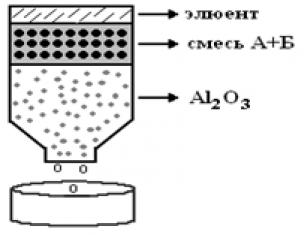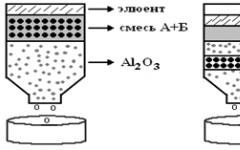The magnetic field of the Moon is a mystery that has haunted astrophysicists, because if it exists, then there are reasons for it. And, as it turned out, indeed, the magnetic field of the Moon may be due to the fact that it has at its disposal a core, which in its composition and properties resembles the earth’s “heart”. When in the 60-70s the Apollos began delivering rock samples from the Moon, scientists were surprised, because in the existing conditions of weak gravity, these samples should have been somewhat different. Since then, two opposing scientific points of view have appeared in the world. According to the first, it is believed that the Moon has always been as we know it; it was formed only thanks to the impacts of those meteorites that left large craters on it.
And according to the second theory, the outer shell of the Moon was formed due to the processes that occur under the surface of the Moon’s shell. As it turned out, when studying samples brought to Earth from the Moon thirty years ago, most of them were formed by the Moon itself and were not affected by meteorites. This means that its formation is related to what tectonic processes took place in the core of the Moon and in the upper layers of the mantle, which hardened over time. Researchers at the Massachusetts Institute of Technology were able to establish that inside the moon, even now, there is a core that consists of molten iron. More and more studies are citing that there may be a large molten iron core inside the Moon, or at least that's what most of the research is pointing to. Ian Garrick-Bethell, the leader of the scientific team, comes to just such a conclusion.
It’s probably worth explaining why scientists pay so much attention, scientists pay so much attention to the structure of the Moon, why they believe that the core is something incredible, because it is in the Earth, why shouldn’t it be in our closest satellite. In fact, scientists have long believed that this formation of the Moon belongs to some relics of the solar system. It is simply a large stone ball that cannot have its own core. But this misconception can be easily explained, because in fact, determining what is inside the Moon is not so simple, because this is not an easy task. After all, it is impossible to penetrate to such depths. And it was possible to make a correct assumption only when sufficient material was collected from the surface and “advanced research methods” appeared. Indeed, a large amount of factual material has now been collected on the satellite, which greatly facilitates the understanding of the processes that occur on it. But no one can say how further research will progress - more precise data is needed regarding the structure and development of the geology and tectonics of the Moon.
Magnetic field
Gravitational effects caused by the presence of the Moon and the Sun cause cyclic deformation of the Earth's mantle, thereby rocking its axis of rotation. This mechanical effect affects the entire planet as a whole and causes strong currents in the outer core, which consists of liquid iron with a very low viscosity. Such currents are sufficient to create the Earth's magnetic field.
The Earth's magnetic field constantly protects us from charged particles and radiation that are generated by the Sun. This shield is formed by geodynamo, the rapid movement of huge quantities of liquid iron alloy in the Earth's outer core. To maintain this magnetic field until today, according to the classical model, the Earth required a core that cooled by about 3000°C over the past 4.3 billion years.
Now, a team of researchers from the CNRS and the University of Pascal say that the core temperature has dropped by only 300°C. This is due to the fact that until now scientists have not taken into account the effect of the Moon, which is believed to have compensated for this difference and maintained the geodynamo in an active state. The researchers' work was published on March 30, 2016 in the journal Earth and Planetary Science Letters.
The classical model of the formation of the Earth's magnetic field has a paradox: when the geodynamo operates, the Earth's core, which was completely molten four billion years ago and at that time had a temperature of about 6800°C today, would have cooled to 3800°C. However, recent simulations of the early evolution of the planet's internal temperature, together with geochemical studies of the composition of the oldest carbonatites and basalts, have not confirmed such cooling. Thus, the researchers suggest that the geodynamo has another source of energy.
The Earth has a slightly flattened shape and rotates on a tilted axis that swings around the poles. Its mantle is elastically deformed due to tidal effects caused by the Moon. Researchers have shown that this effect can continuously stimulate the movement of the liquid iron alloy that makes up the outer core, and in turn generate the Earth's magnetic field. Due to the transfer of gravitational energy from the rotation of the Earth-Moon-Sun system, the Earth continuously receives 3,700 billion watts of power, of which more than 1,000 billion watts are believed to be available to create this type of movement in the outer core. This energy is enough to generate the Earth's magnetic field, thereby solving the main paradox of the classical theory. The influence of gravitational forces on the planet’s magnetic field has already been documented using the example of two satellites of Jupiter: Io and Europa, as well as for a number of exoplanets.
Since neither the rotation of the Earth around its axis, nor the direction of its axis, nor the orbit of the Moon are constant, their combined influence on the motion in the core is unstable and can cause oscillations in the dynamo. This process may explain the presence of warmer regions in the outer core and at its boundary with the Earth's mantle. Which in turn could lead to major volcanic events in the history of the Earth. A new model shows that the Moon's influence on Earth goes far beyond simple tides.
The Earth's magnetic field constantly protects us from charged particles and radiation that come to us from the Sun. This shield is created by the rapid movement of a huge amount of molten iron in the outer core of the Earth (geodynamo). In order for the magnetic field to survive to this day, the classical model envisions a cooling of the core by 3,000 degrees Celsius over the past 4.3 billion years.
However, a team of researchers from the French National Center for Scientific Research and Blaise Pascal University reported that the temperature of the core dropped by only 300 degrees. The action of the Moon, previously ignored, compensated for the temperature difference and maintained the geodynamo. The work was published on March 30, 2016 in the journal Earth and Planetary Science Letters.
The classical model of the formation of the Earth's magnetic field has given rise to a paradox. For the geodynamo to work, the Earth must have been completely molten 4 billion years ago, and its core must have slowly cooled from 6,800 degrees then to 3,800 degrees today. But recent modeling of the early evolution of the planet's internal temperature, coupled with geochemical studies of the composition of the oldest carbonatites and basalts, does not support such cooling. Thus, the researchers suggest that the geodynamo has another source of energy.
The Earth has a slightly flattened shape and a tilted axis of rotation that swings around the poles. Its mantle is elastically deformed due to tidal effects caused by the Moon. Researchers have shown that this effect can continuously stimulate the movement of molten iron in the outer core, which in turn generates the Earth's magnetic field. Our planet continuously receives 3,700 billion watts of power through the transfer of gravitational rotational energy from the Earth-Moon-Sun system, and more than 1,000 billion watts are believed to be available to the geodynamo. This energy is enough to generate the Earth’s magnetic field, and together with the Moon, this explains the main paradox of the classical theory. The influence of gravitational forces on the planet’s magnetic field has long been confirmed by the example of Jupiter’s satellites Io and Europa, as well as for a number of exoplanets.
Since neither the Earth's rotation on its axis, nor the direction of the axis, nor the Moon's orbit are regular, their combined effect is unstable and can cause fluctuations in the geodynamo. This process may explain some of the thermal pulses in the outer core and at its boundary with the Earth's mantle.
Thus, the new model shows that the influence of the Moon on Earth goes far beyond the tides.
It was recently discovered that the Moon also has magnetic properties. Data obtained from automatic probes told scientists that the solar wind flows around the Moon and interacts with it completely differently than with the Earth, because it, unlike our planet, does not have its own magnetic field. But that doesn’t stop her at all...
Around the Earth, the flow of solar wind forms the magnetosphere - a cavity in the shape of a huge elongated drop, inside which a geomagnetic field manifests itself. The head part is always facing the Sun, from where the solar wind comes; the distance to its border is 10-12 Earth radii, that is, about 70 thousand kilometers. On the night side of the Earth, in the antisolar direction, the long tail of the magnetosphere extends more than 200 Earth radii, its length is more than a million kilometers. And this magnetosphere flies in orbit together with the Earth, enveloping the Earth and protecting the planet from harmful short-wave radiation.
But this is all the magnetic shell of the Earth. What about the satellite of our planet? Reliable experimental information about the magnetic field of the Moon was first obtained by Russian scientists from the Institute of Terrestrial Magnetism, Ionosphere and Radio Wave Propagation of the Russian Academy of Sciences, when the first successful flight of a spacecraft from the Earth to the Moon was launched in 1959. This needs to be discussed in particular, since this space mission was for the first time equipped with scientific instruments that telemetrically transmitted scientific data to the control center during the flight from the Earth to the Moon, because the mission’s fate was short - to fly to the Moon and crash in a hard landing...
On September 12, 1959, the Vostok-L launch vehicle was launched, which placed the Luna-2 automatic interplanetary station (AIS) on a flight path to the Moon. The spacecraft did not have its own propulsion system and simply crashed on September 14, 1959, for the first time in the world reaching the surface of the Moon in the Mare Serenity region near the craters Aristil, Archimedes and Autolycus. A pennant depicting the coat of arms of the Union of Soviet Socialist Republics was delivered to the surface of the Moon! N. S. Khrushchev presented a duplicate of the pennant to the American President, Mr. Eisenhower, as a souvenir during his trip to the USA.
From the point of view of scientific achievements, this was the first successful experiment. The Luna 2 spacecraft was equipped with scientific equipment: scintillation counters, Geiger counters, magnetometers, and micrometeorite detectors. IZMIRAN employee, head of the laboratory S. Sh. Dolginov, a specialist in planetary magnetism, was responsible for the magnetometers. The telemetry signals from the instruments were received successfully, but the signals from the magnetometers did not show the magnitude of the Moon’s magnetic field! An experiment to measure the magnetism of the Moon was carried out, and it was necessary to have confidence in your instruments and extraordinary courage to immediately express your point of view, as S. Sh. Dolginov did. He said that the Moon does not have its own magnetic field in a dipole configuration! The results were published in the Russian scientific press. This is how this first discovery was made, which defined the Moon as a non-magnetic cosmic body!
Years have passed since those first steps into space. Now space missions are multiple and varied, including measuring magnetic fields in the solar wind and magnetosphere, on asteroids and other planets. And now it is possible to study and discover much more subtle effects and interactions.
And recently it turned out that the Moon, which does not have its own magnetic field, nevertheless influences the magnetic fields in the solar wind, and these changes are detected tens of thousands of kilometers from the lunar surface. This is due to the peculiarities of the flow around the Moon with a continuous stream of plasma rushing directly from the Sun, which is very variable, its parameters vary quickly. The speed and density of particles in the oncoming plasma changes, as well as the interplanetary magnetic field carried by the solar wind, varying from units to tens of nT.
But why does all this happen, since the Moon does not have a magnetosphere due to the lack of its own magnetic field? The point is this: the flow of solar wind plasma freely reaches the surface of the satellite on the illuminated side of the Moon. But it itself, nevertheless, carries an interplanetary magnetic field from the Sun and is a conducting medium, the structure and behavior of which when flowing around the Moon turned out to be much more complex than NASA researchers assumed, as reported in a recent press release.
Even at distances of about 10 thousand kilometers above the surface of the Moon, plasma flows of ions and electrons are recorded, creating turbulent disturbances in the oncoming solar wind flow. Plasma parameters change long before the surface of the Moon. These phenomena of turbulence in the solar wind long before the obstacle were identified in the data of many spacecraft: the American probe Lunar Prospector, the Japanese satellite Kaguya (SELENE), the Chinese Chang ′ e-2, the Indian Chandrayaan-1.
The ARTEMIS space probe, in addition to changes in the density and energy of electrons and ions, detected the presence of electromagnetic and electrostatic waves at an even greater distance from the Moon in the solar wind flow. This region resembles a zone of compressed plasma when flowing around an obstacle, the so-called “foreshock”. This phenomenon occurs before the bow shock wave in the Earth's magnetosphere. Since the Moon, as mentioned above, does not have a magnetosphere, this phenomenon most likely should be attributed to the peculiarities of plasma flowing around obstacles.
Computer modeling of plasma processes has shown that directly near the surface of the Moon, under the influence of solar radiation, variable electric fields arise when the plasma flow flows. It turned out that they can accelerate electrons released from the electron shells of atoms by ultraviolet rays from the Sun. Ion flows are formed from protons of the solar wind and are reflected back under the influence of weak magnetic fields of remanent magnetization, which are preserved in the surface rocks of the Earth's satellite in certain regions of the lunar surface. These streams of ions are reflected back into space and resemble the jets of fountains.
Electromagnetic fields of remanent magnetization, which appear at distances of only a few meters from the surface, stimulate turbulent disturbances in the solar wind thousands of kilometers from the Moon. Similar phenomena can occur in the vicinity of other bodies in the Solar System that do not have their own global magnetic field. The flow of solar wind around such obstacles has revealed many unexpected plasma effects that require further research.
This data is important for determining the safety of manned missions to the Moon.
Several billion years ago, the Moon had approximately the same strong magnetic field as the Earth, although its intensity was about 30 times less. The magnetic field of the Earth and some other planets serves a protective function, deflecting much of the solar wind that destroys the ozone layer.
The Earth's magnetic field is generated by the movement of particles in the liquid core. The core of the Moon has a slightly different structure and is much smaller in size. But scientists suggested and almost proved that many years ago there was just such a core inside the Moon. It created a powerful magnetic field. The presence of magnetization around the Moon refutes the theory that this planet is a huge rock formation and cannot have its own core. It is not possible to look into the lunar depths and study the structure well, but based on certain indirect signs this can be done.
The second hypothesis was that the magnetization was not caused by the Moon's small metallic core, but by a thick layer of molten (liquid) rock sitting on top of it.
Magnetic field of the modern Moon
In fact, the magnetic field of the modern planet Moon consists of constant and variable fluxes. Constant fields are created by magnetized surface rocks. They change very quickly from one point to another. Variable fields arise in the depths of the Moon.
The Moon's magnetic field is currently very weak. Its tension is approximately 0.5 gamma. Experts explain that this is approximately 0.1% of the earth's field strength. The electric field near the Moon was not measured, but studies were carried out and scientists found that it exists and, due to the significant tidal influence from the Earth, a strong redistribution of electrical charges should occur inside the Moon.







